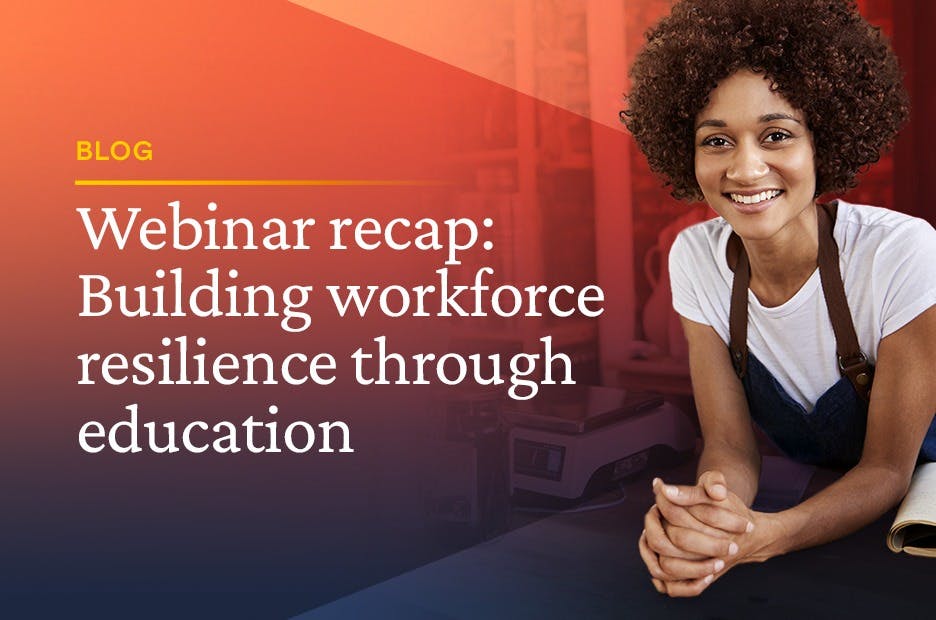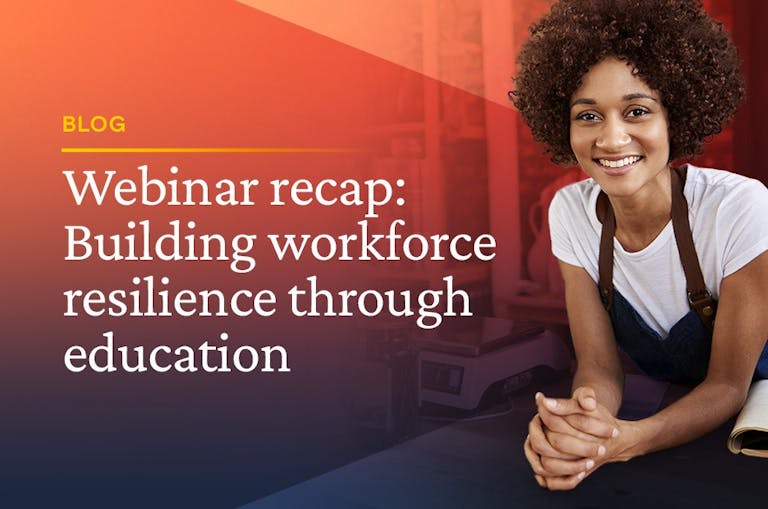In today’s environment, top of mind for many businesses is survival and where to focus efforts now. Equally important, they’re also planning for sustainable growth in the long run. Whether from a short- or longer-term view, strong companies that rise to meet these challenges, especially in times of crisis, share an essential trait – workforce resilience. We’ll begin by defining workforce resilience and why it matters for your company.
What is workforce resilience?
Workforce resilience (or employee resilience) can be defined as the characteristic of your employees to deal with the stress of the modern workplace. This includes being able to adapt and move forward when unprecedented challenges arise such as a sudden move to a distributed work model, natural disasters, or just the added stress that comes with working. Building a crisis-resilient workforce is necessary to deal with the uncertainty surrounding today’s business world.
Here are a few examples of resilience at work:
Examples of workforce resilience
- Improved and collaborative communication
- Better handling of new challenges and workplace stress
- Reduced levels of burnout
- Better interpersonal and team relationships
- Open to upskilling and development.
How to build workforce resilience
How can businesses tap into continuing education to build resilience in the workforce?
In our recent webinar, Building a Resilient Workforce & Business Through Online Education we share key takeaways that highlight the business impact of workforce education from three perspectives – culture, leadership, and individuals.
Reaffirm your company culture to build employee resilience
Employee growth, innovation, and engagement are hallmarks of strong company cultures. What an organization does now around company culture affects workforce resilience and can define it for years.
However, an estimated 85 percent of the world’s employees are either not engaged or actively disengaged at work according to the 2019 Gallup Employee Engagement Report. They also care more about personal growth over job satisfaction.
So, maintaining a company culture that promotes personal and professional development is crucial during these times, especially with a highly distributed workforce. This encourages innovation and positively impacts employee engagement, which fosters a more resilient workforce.
“You have to rely even more on the company culture that you’ve created to ensure people are excited and engaged during major business shifts or remote working.”
– Jonathan Lau, Chief Learning Officer & Co-Founder at InStride
Empower your leaders to build resilience at work
Building a resilient workforce stems from leadership that inspires human potential. Leadership encompasses employees at every level, from top- and mid-level executives to your frontline workers who are tasked to make day-to-day business decisions in real-time and deliver on customer satisfaction.
During times of change and uncertainty, it’s crucial to understand all of your leaders’ challenges, as well as the new skills and tools required for success. The Pew Research Center found that 87 percent of adults in the workforce acknowledge that it will be essential or important for them to get training and develop new skills throughout their careers to keep up with workplace changes.
This is where the importance of upskilling and reskilling cannot be underestimated.
[Read more: How to Upskill Your Employees]
Online workforce education reinforces employee resilience by ensuring your leaders are trained and prepared, plus identifies potential leaders who want to further their professional growth.
Invest in and start with people to foster a workforce culture of resilience
Your organization may offer industry-leading products and/or services, but the success of your business comes down to one thing – your people. Every individual, no matter when or at what level, wants to be appreciated. This can be achieved through a commitment to support their professional advancement and growth.
The best way to build employee resilience is by upskilling, reskilling, and preparing for the changes ahead. This leads to workforce resilience at an individual level, which ultimately has a positive impact on your business.
“Investing in your employees and helping them be successful are great ways to build trust and resilience.”
– Jonathan Lau, CLO & Co-Founder at InStride
At InStride, we strongly believe and have seen that investing in employee growth and workforce education builds resilience at all levels. Quality online education provides an accessible pathway to workforce resilience, which is even more important in these uncertain times.
Interested in learning more? Access the full webinar here.

